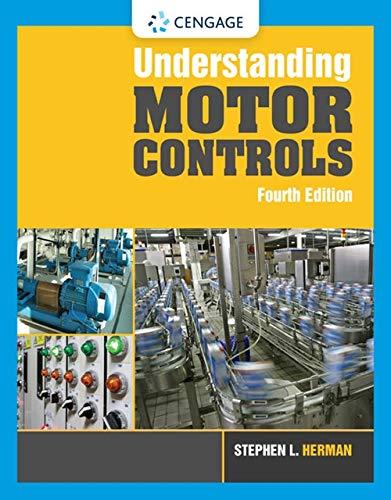
Precision Machining Technology
3rd Edition
ISBN: 9781337795302
Author: Peter, Hoffman.
Publisher: Cengage Learning,
expand_more
expand_more
format_list_bulleted
Concept explainers
Textbook Question
Chapter 6.3, Problem 4RQ
Define IPM.
Expert Solution & Answer
Want to see the full answer?
Check out a sample textbook solution
Students have asked these similar questions
Can you provide steps and an explaination on how the height value to calculate the Pressure at point B is (-5-3.5) and the solution is 86.4kPa.
PROBLEM 3.46
The solid cylindrical rod BC of length L = 600
mm is attached to the rigid lever AB of length a
= 380 mm and to the support at C. When a 500
N force P is applied at A, design specifications
require that the displacement of A not exceed
25 mm when a 500 N force P is applied at A
For the material indicated determine the
required diameter of the rod.
Aluminium: Tall = 65 MPa, G = 27 GPa.
A
Find the equivalent mass of the rocker arm assembly with respect to the x coordinate.
k₁
mi
m2
k₁
Chapter 6 Solutions
Precision Machining Technology
Ch. 6.1 - What part of the vertical milling machine allows...Ch. 6.1 - Briefly describe the direction of movement...Ch. 6.1 - When a table handle is turned clockwise the table...Ch. 6.1 - What distance does the saddle or table usually...Ch. 6.1 - Prob. 5RQCh. 6.1 - Briefly describe the function of the turret and...Ch. 6.1 - What is the name of the taper found in most modem...Ch. 6.1 - What part of the vertical mill can be raised and...Ch. 6.1 - How can power quill feed be automatically stopped...Ch. 6.1 - What is a benefit of using a DRO instead of...
Ch. 6.2 - Many of the cutters used in machining are made of...Ch. 6.2 - What is the major advantage of using...Ch. 6.2 - Prob. 3RQCh. 6.2 - What type of cutting tool would most likely be...Ch. 6.2 - Which type of cutter would most likely be used to...Ch. 6.2 - What workpiece factors might cause a four-flute...Ch. 6.2 - List three types of milling cutters that are used...Ch. 6.2 - Most manual vertical milling machine spindles are...Ch. 6.2 - A __________ is used to retain the toolholder in...Ch. 6.2 - What type of toolholder might he selected for...Ch. 6.2 - Sketch a corner-rounding endmill.Ch. 6.2 - What toolholding device uses two drive keys and a...Ch. 6.2 - Prob. 13RQCh. 6.2 - List the four basic pieces of a step clamp set: a....Ch. 6.2 - Prob. 15RQCh. 6.2 - Irregularly shaped work may be held in a custom...Ch. 6.3 - List five safety guidelines to observe when...Ch. 6.3 - Briefly describe the process of aligning a milling...Ch. 6.3 - What is chip load?Ch. 6.3 - Define IPM.Ch. 6.3 - Calculate spindle speed and feed for the two...Ch. 6.3 - Briefly describe the process of locating the...Ch. 6.3 - What are two benefits of boring over other...Ch. 6.3 - What are face milling and peripheral milling?Ch. 6.3 - When squaring a block on the vertical mill, what...Ch. 6.3 - What are the three basic methods used to mill...Ch. 6.3 - What must first be done before milling with either...Ch. 6.3 - Prob. 12RQCh. 6.3 - What diameter cutter should be used to create...Ch. 6.3 - When roughing a pocket, should you machine in a...Ch. 6.4 - What is a rotary axis?Ch. 6.4 - Define the term indexing.Ch. 6.4 - Describe the primary differences between the...Ch. 6.4 - Name three types of workpiece features that are...Ch. 6.4 - Briefly describe the two alignment steps that need...Ch. 6.4 - If the outside of a 6"-diameter disk is to be...Ch. 6.4 - What is the gear ratio found in the gear train of...Ch. 6.4 - When using the indexing head, a __________ can be...Ch. 6.4 - A workpiece requires 9 divisions. Calculate the...Ch. 6.4 - In the formula 40D=T,what do T and D represent?
Knowledge Booster
Learn more about
Need a deep-dive on the concept behind this application? Look no further. Learn more about this topic, mechanical-engineering and related others by exploring similar questions and additional content below.Similar questions
- 2. Figure below shows a U-tube manometer open at both ends and containing a column of liquid mercury of length l and specific weight y. Considering a small displacement x of the manometer meniscus from its equilibrium position (or datum), determine the equivalent spring constant associated with the restoring force. Datum Area, Aarrow_forward1. The consequences of a head-on collision of two automobiles can be studied by considering the impact of the automobile on a barrier, as shown in figure below. Construct a mathematical model (i.e., draw the diagram) by considering the masses of the automobile body, engine, transmission, and suspension and the elasticity of the bumpers, radiator, sheet metal body, driveline, and engine mounts.arrow_forward3.) 15.40 – Collar B moves up at constant velocity vB = 1.5 m/s. Rod AB has length = 1.2 m. The incline is at angle = 25°. Compute an expression for the angular velocity of rod AB, ė and the velocity of end A of the rod (✓✓) as a function of v₂,1,0,0. Then compute numerical answers for ȧ & y_ with 0 = 50°.arrow_forward
- 2.) 15.12 The assembly shown consists of the straight rod ABC which passes through and is welded to the grectangular plate DEFH. The assembly rotates about the axis AC with a constant angular velocity of 9 rad/s. Knowing that the motion when viewed from C is counterclockwise, determine the velocity and acceleration of corner F.arrow_forward500 Q3: The attachment shown in Fig.3 is made of 1040 HR. The static force is 30 kN. Specify the weldment (give the pattern, electrode number, type of weld, length of weld, and leg size). Fig. 3 All dimension in mm 30 kN 100 (10 Marks)arrow_forward(read image) (answer given)arrow_forward
- A cylinder and a disk are used as pulleys, as shown in the figure. Using the data given in the figure, if a body of mass m = 3 kg is released from rest after falling a height h 1.5 m, find: a) The velocity of the body. b) The angular velocity of the disk. c) The number of revolutions the cylinder has made. T₁ F Rd = 0.2 m md = 2 kg T T₂1 Rc = 0.4 m mc = 5 kg ☐ m = 3 kgarrow_forward(read image) (answer given)arrow_forward11-5. Compute all the dimensional changes for the steel bar when subjected to the loads shown. The proportional limit of the steel is 230 MPa. 265 kN 100 mm 600 kN 25 mm thickness X Z 600 kN 450 mm E=207×103 MPa; μ= 0.25 265 kNarrow_forward
- T₁ F Rd = 0.2 m md = 2 kg T₂ Tz1 Rc = 0.4 m mc = 5 kg m = 3 kgarrow_forward2. Find a basis of solutions by the Frobenius method. Try to identify the series as expansions of known functions. (x + 2)²y" + (x + 2)y' - y = 0 ; Hint: Let: z = x+2arrow_forward1. Find a power series solution in powers of x. y" - y' + x²y = 0arrow_forward
arrow_back_ios
SEE MORE QUESTIONS
arrow_forward_ios
Recommended textbooks for you
 Precision Machining Technology (MindTap Course Li...Mechanical EngineeringISBN:9781285444543Author:Peter J. Hoffman, Eric S. Hopewell, Brian JanesPublisher:Cengage Learning
Precision Machining Technology (MindTap Course Li...Mechanical EngineeringISBN:9781285444543Author:Peter J. Hoffman, Eric S. Hopewell, Brian JanesPublisher:Cengage Learning Understanding Motor ControlsMechanical EngineeringISBN:9781337798686Author:Stephen L. HermanPublisher:Delmar Cengage Learning
Understanding Motor ControlsMechanical EngineeringISBN:9781337798686Author:Stephen L. HermanPublisher:Delmar Cengage Learning Automotive Technology: A Systems Approach (MindTa...Mechanical EngineeringISBN:9781133612315Author:Jack Erjavec, Rob ThompsonPublisher:Cengage Learning
Automotive Technology: A Systems Approach (MindTa...Mechanical EngineeringISBN:9781133612315Author:Jack Erjavec, Rob ThompsonPublisher:Cengage Learning

Precision Machining Technology (MindTap Course Li...
Mechanical Engineering
ISBN:9781285444543
Author:Peter J. Hoffman, Eric S. Hopewell, Brian Janes
Publisher:Cengage Learning

Understanding Motor Controls
Mechanical Engineering
ISBN:9781337798686
Author:Stephen L. Herman
Publisher:Delmar Cengage Learning

Automotive Technology: A Systems Approach (MindTa...
Mechanical Engineering
ISBN:9781133612315
Author:Jack Erjavec, Rob Thompson
Publisher:Cengage Learning
Properties of Fluids: The Basics; Author: Swanson Flo;https://www.youtube.com/watch?v=TgD3nEO1iCA;License: Standard YouTube License, CC-BY
Fluid Mechanics-Lecture-1_Introduction & Basic Concepts; Author: OOkul - UPSC & SSC Exams;https://www.youtube.com/watch?v=6bZodDnmE0o;License: Standard Youtube License